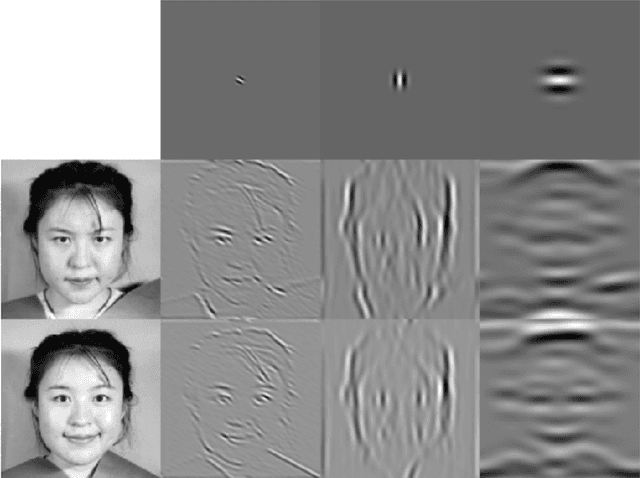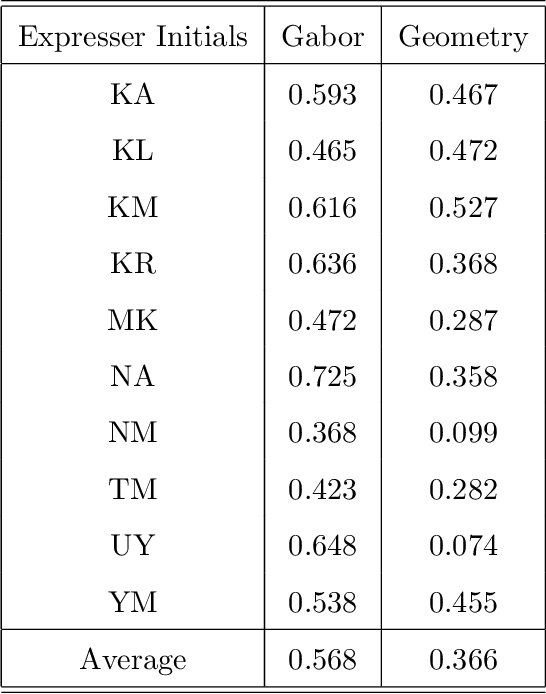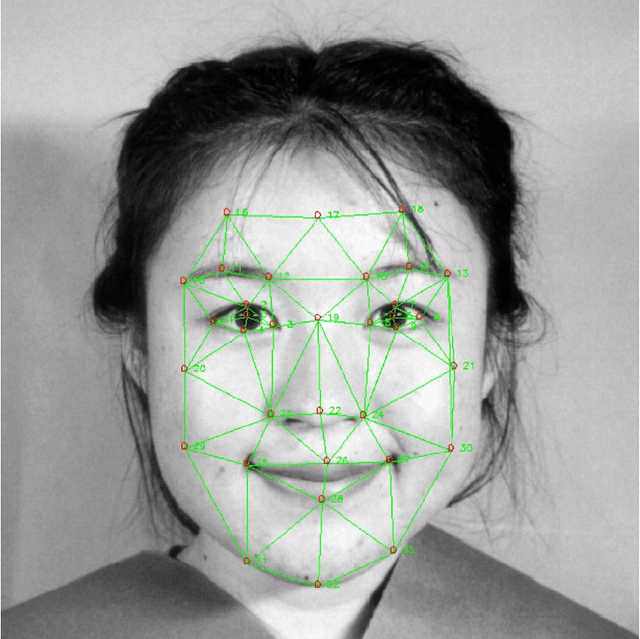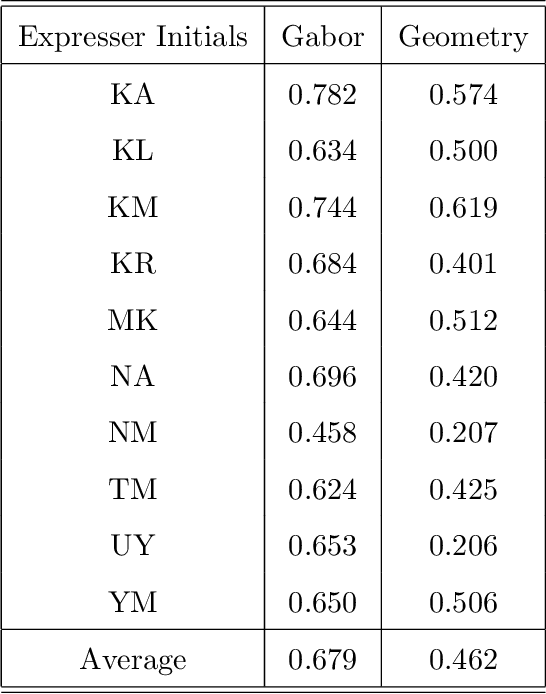Coding Facial Expressions with Gabor Wavelets (IVC Special Issue)
Paper and Code
Sep 13, 2020



We present a method for extracting information about facial expressions from digital images. The method codes facial expression images using a multi-orientation, multi-resolution set of Gabor filters that are topographically ordered and approximately aligned with the face. A similarity space derived from this code is compared with one derived from semantic ratings of the images by human observers. Interestingly the low-dimensional structure of the image-derived similarity space shares organizational features with the circumplex model of affect, suggesting a bridge between categorical and dimensional representations of facial expression. Our results also indicate that it would be possible to construct a facial expression classifier based on a topographically-linked multi-orientation, multi-resolution Gabor coding of the facial images at the input stage. The significant degree of psychological plausibility exhibited by the proposed code may also be useful in the design of human-computer interfaces.
 Add to Chrome
Add to Chrome Add to Firefox
Add to Firefox Add to Edge
Add to Edge